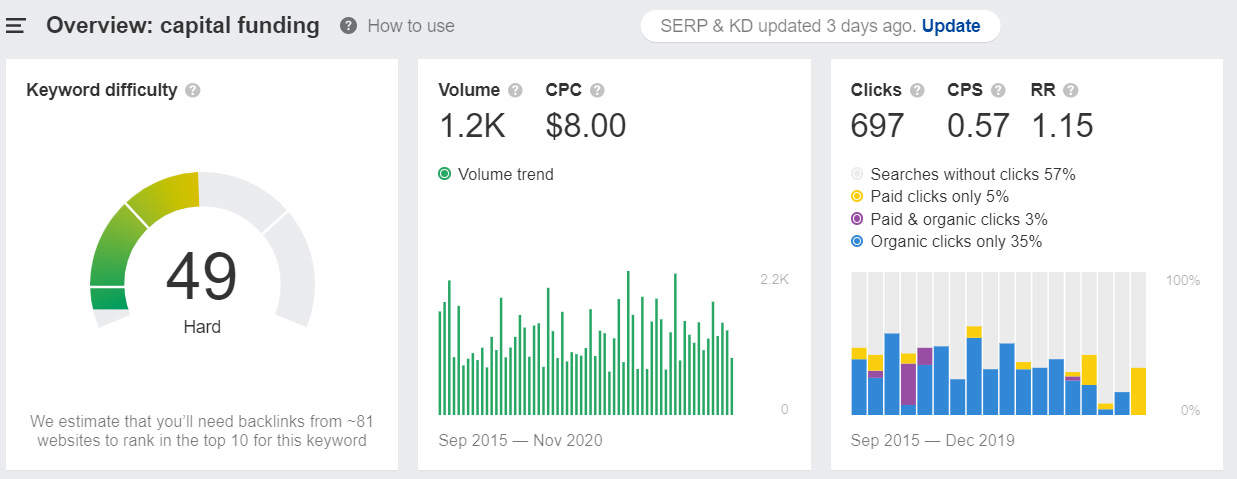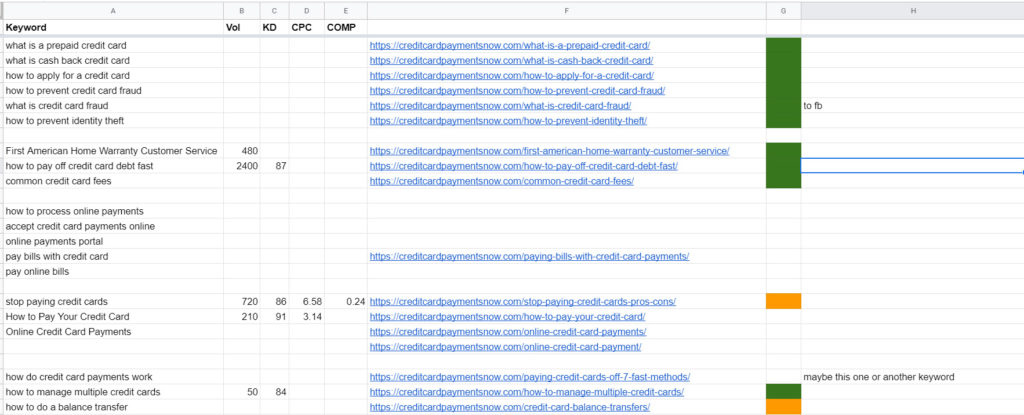Interested in getting a website for your business or medical practice? Read our complete guide on How to Make a Business Website from Scratch to understand what this process looks like, what to avoid and how to plan for success.
Who Am I to Tell You How to Make a Business Website?
I’m a website designer with 2 decades of experience in building websites. I’ve created HUNDREDS of websites, I worked with clients from all over the world. Now, as the owner of Web Design NJ, I handle the work for our business clients who want new websites and also SEO services.
Based on my 20 years of experience, here is how to make your business website from scratch and, more importantly GET CLIENTS from it.
You Will Not Make a Business Website for Free
I know there are so many ads out there from Weebly, Wix or Squarespace, promising you the moon and the stars for free.
We are all grownups, so you know there’s no free meal, and, when you are being promised this, YOU yourself are the “product”.
Such services will block your domain name for months (and you’ll pay a lot to get it back), put their links all over your website (making it look unprofessional – no serious business uses free website builders, right?) and you will actually pay money for anything: an email address, any extra space etc.
Another big issue is that many of these providers lack in properly optimizing your website for the search engines, so you will just have a website that doesn’t look professionally and will never rank and get you leads.
We create websites that are sales funnels for our clients. It’s useless to invest in a website that will never get you any leads. So we plan your website for lead generation from the get to, so that, after few months (when it’s out of the Google sandbox), the website will start getting you more business.
Now that we made this clear, let’s see how to properly make a business website from scratch.
How to Plan Your Business Website
One of my clients, who came for SEO and a drastic redesign for his website, told me the previous company provided NO Search Engine Optimization services for their website. Which is wrong.
If you don’t properly optimize your site from the moment you launch it, you will never get any business out of it. I had clients with 2-3 year old websites that were either not indexed at all (shocking, as all our websites get indexed within 1-2 days the latest), or not ranking at all.
Why would you struggle to create a business website if nobody will ever find it?
While we understand that SEO services are different from the main web design services (as they are monthly commitments that bring the website up in the search engines), not creating a properly optimized website for your client is just BAD BUSINESS.
Even in our case, the services we render are 2 stage:
- Website Design – this is when we create your project (or re-design, if it’s the case). We do start from an SEO plan, we do provide you with the strategies to follow in the next months. But we optimize your website from zero, we create your GMB (Google My Business) listing and make sure it has those initial rankings we talked about.
- Monthly SEO Services – once the website is launched, we work on it on a monthly basis: adding content, links to the website, citations, maintenance etc. These services are important, so that you will outrank your competitors and get the lion share of the traffic, but need to be provided on a website / GMB that are already perfectly put together.
So, if you hear from a web design company that they don’t optimize your website from the launch, do go away. Otherwise you will pay for a badly designed website and then extra to have your SEO issues taken care of.
You cannot effectively rank and promote a project that has a bad technical SEO, it would be like swimming with your hands tied to your back. Might not drown, but it will be pretty darn hard to stay afloat.
Now that we understand how important planning is, let’s see how it’s actually done:
Initial Keyword Research
So, I have a client who runs a capital funding company in New Jersey. He provides commercial and residential loans, all kinds of loans for businesses and regular folks. Knowing this, we start looking for the best KEYWORDS, to start optimizing their website (TheCapitalFundingPros.com).
What is the client selling?
CAPITAL FUNDING services, mainly.
Why do I ask this?
Because, if this is what the client is selling, this is what I will rank the client for. This is my main SEO focus, this is how I create the selling funnel for the client.
Now, let’s see if the client’s service is something that people actually look for (with these exact words). Not using the RIGHT keywords (exact words people use in Google, when searching for your services) will make it impossible to get any prospects for your business.

This would be the MAIN service and keyword we’ll try to rank the website for.
Let’s take a look, what does this mean?
- VOLUME – this means that, in the US alone, there are 1.2 K people every month, searching for this. It means 40 people every day are looking for capital funding, so there is the chance to get my client some website visitors and leads from this keyword alone. In our SEO services we actually work every month to rank for more keywords, meaning more traffic / leads for the client.
- KEYWORD DIFFICULTY – this is a pretty difficult keyword to rank for. It’s 49/100, which means we need some more work to get our client on the first page. This is why it is highly recommended that, after you got your website up and running, to also get SEO services for at least 5-6 months. During this time we’ll get you links, a lot of new content and boost your website’s authority.
- CPC – Cost Per Click – how much you would pay for ONE click, if you advertised on Google Ads. I have medical SEO clients who rank for keywords with a CPC of $50 and even $110. It’s a lot of money to pay just to get ONE website visitor, right? If you rank organically (in the search results and the map section) you can get unlimited clicks on your website, just paying an SEO consultant a fixed monthly fee. Our example keyword costs $8, roughly. If there’s a higher competition on this keyword, you can end up paying even more, as Google Ads is a BIDDING system (more businesses bidding on the keyword, higher costs).
Does the client need more keywords?
Of course.
We have the main one “capital funding”, then we’ll have service pages, location pages etc. with variants: capital funding New Jersey, Newark Capital Funding and so on.
But there’s more.
We’ll need to rank for “adjustable rate mortgage”, “fixed rate mortgage” and whatever other services my client provides.
These keywords will be assigned to ONE page (one keyword / one page) and we’ll try to rank for them.
In order to do this, we’ll need to get our client external websites to link to these “money making” pages and also create supporting content, in order to show the search engines the client is an authority in this industry.
So we’ll create supporting “blog” articles like “what is an adjustable rate mortgage”, “what is an advantage of an adjustable-rate mortgage”, “which is better fixed or adjustable rate mortgage”, “
which is true of an adjustable rate mortgage”, “how does an adjustable rate mortgage work”.
Each of these articles needs to be WELL written, of at least 800-1,000 words, properly optimized (keyword in the title, description, headings, content, images, link etc.) and then send from these links to the main page we try to rank with them.
In order to keep clients’ heads from exploding, I use a simple keyword mapping system: an excel file that allows me to put the initial keywords we’ll try to rank for, pages we create(d) for them and then, after we do our ongoing SEO, the rankings, strategy tweaks etc.

This is a quick example of a keyword mapping page that I share with my client, BEFORE even deciding on the colors or imagery for the website.
Competitor Analysis
When it comes to web design, the competitor analysis process is two-fold:
- my clients are encouraged to give me 3-4 websites they like (and why), usually they give me same-niche competitors, so that I can study how the websites look;
- what clients don’t know/care about – I also look at the websites from a content / SEO standpoint.
Even if as a website designer, I should care about looks mainly, my competitor analysis is way more complex: when trying to rank my clients’ websites, what their competitors are doing is extremely important.
So, what do I look for?
- websites authority – most SEO tools have their own authority ranking system: MOZ has DA (Domain Authority), Majestic has Trust Flow and Citation Flow, Ahrefs has DR (Domain Rating) etc. These are numbers from 0 to 100. If the client’s competitors have websites of with high authority, it means it will be a pain to outrank them. Not impossible, but we’ll need a very aggressive SEO strategy to do so.
- content – if you’re trying to outrank a 100 page website with almost zero content, good luck to you. Google ranks content! So, you need to write: about your services, advice you give to your clients, news, research etc. Take a look at my article you are currently reading .. it’s just one of the content pillars I add so that I can outrank any other New Jersey web design agency.
- back links – who is linking to the competitors and how can we get them to link to us as well? If not, we’ll see the domain authority of the websites linking towards my clients’ competitors and replicate this authority (get links from similar websites). Back links are MANDATORY if you want to stand a chance to ever rank, so it’s part of our SEO service plans each month.
- keywords – as part of my initial research the competitors keywords are VERY important. I can see what they rank for and based on the other details (authority, links etc.) I can build a strategy for my client, so that, after we launch, we can outrank these competitors in 5-6 months at least. For low competition niches this can be done in 2-3 months, on others it can take 2-3 years. But, if you just start out with a websites that has no planning and optimization, you will never actually outrank anyone.
I’m over 1,700 words into this “How to Make a Business Website from Scratch” article and we’re still in the planning stages. I haven’t touched Photoshop to create a mockup design yet, I haven’t installed anything, we don’t even have a domain name or hosting account.
Just want to make it clear that it’s impossible to build a website for free, considering that only the SEO tools I used so far cost 300-400 A MONTH. If you don’t know how to use them (and unless you are an SEO consultant, like I am), you will also need someone to deliver you this initial research. And this, again, costs money.
Finally, How to Make a Business Website from Scratch
Get a Domain Name
After all this research work, we are finally able to decide on a domain name for the client and then set up a web hosting account.
Domain names can be “keyword rich” (webdesignNJ.com and InjuryDoctorNYC.com for instance) or brand names (TheMedically.com). There’s a middle ground (Croatia-Wave.com), when you have a keyword with another word that has branding value.
What to choose?
It really depends. While Google have mentioned time and time again that they don’t give a ranking boost to EMDs (Exact Match Domains – such as webdesignNJ.com), we did find that it makes sense to use them for some projects as they do get a boost, especially in the Google My Business listing rankings).
We did rank successfully websites that were branded (no keywords in the domain name), so it’s really a matter of seeing what your business name is and decide if we include keywords in the domain name or not.
A domain name can be “aged” (worldshotokankarate.com), which means we register it for a client, but the domain isn’t completely new. In this case we can use the existing Domain Authority and links already pointing to that domain to boost our clients’ rankings, especially in the first months, while the website is still in the Google sandbox.
We can also use a brand new domain name (without any previous use), such as TheCapitalFundingPros.com, which we purchased for a new client of ours. While the keyword is pretty difficult to rank for, we’ll make up for it with an aggressive content / backlinks strategy.
Get Hosting and Install WordPress
I won’t go into any details about why I recommend WordPress, right now, for all my websites and most of my clients, it’s the right platform to use.
Really easy to manage, if you decide to take matters in your own hands and do some website maintenance on your own, while also very solid for all your future SEO work.
My mantra is that, if your website doesn’t rank, it’s useless, so any push you can get towards the top of the search engines’ results is an advantage. After many years since being released, WordPress is so far a very solid option.
Hosting accounts are pretty affordable, usually around 10 bucks/month.
Design, Content, Launch
Years ago, I’d have written almost an entire book on how to do the design: how to create a mockup design for the client, how to look for the right colors, what they mean etc.
Now I’ve created a routine that’s more goals oriented than just aiming for fancy looks. I love good colors, I stick to professional and clean designs, but I also think about code cleanness, about simplicity (which means websites load faster, so we rank higher).
At this stage we work together with the client to set up a great look and make sure everything clicks into place.
Being able to provide all needed services: logo design, graphic design and website design as well, allows us to be in full control over the brand identity of the client and also on how the website looks and WORKS.
I’m a old-fashioned web designer, so a clean code is also important. And, what would you know, a fast loading / well coded website will OUTRANK websites that are poorly put together. Which makes sense, as a slow page, with a lot of bells and whistles, will ruin the user’s experience. And this in itself is also a direct ranking factor.
The main advantage for a web designer with solid SEO knowledge is that you understand how to also make sure your clients’ websites will perform in the search engines.
I’ve had way too many clients who paid a truckload of money on a website and never ranked. Websites that cost 5-15K, not something whipped out by nephew Johnny. So, after a huge investment, wasted time (many design companies take 3-4 months to build a website), you’re still left with nothing.
In 3-4 months, I can get that website to rank and bring in business already, as it takes less than 30 days to put it together, set everything up and start an aggressive SEO campaign.
What Are the Main Steps to Design the Business Website?
- all the initial research I wrote about.
- brand identity work (if needed) – logo design mainly, so that we base the website colors and imagery on that. I cannot design a website, if we don’t have a logo ready.
- mockup design – meaning an image of how the website will look (first page). Allows the client to see the fonts, colors, images, logo in place, menu etc.
- mockup design is being edited and finalized – the client requests for edits (if needed) and then approves it. We don’t start coding the website until the design is FINAL.
- coding the design and putting it together on a freshly installed platform (usually WordPress).
- proper setup – plugins, Google Analytics, Google Search Console, GMB, emails etc.
- all data is made available to the client – access to our main Excel sheet with keywords, ranking strategies and to-do. If the client chooses our SEO services from this moment on, we’ll handle the SEO work, if not, he can start content / linking / citations etc. based on our strategies.
Most clients choose us to handle their Search Engine Optimization / Marketing work, but, if they would like to do it in-house, they do get access to all our data.
With 20 years of client work under my belt, I know for sure that, if a client is not ready to commit to my SEO services, withholding data from them, just to “scare them into buying” from me is not how you do business.
So I am very transparent with all my work, I put all the efforts I can into the website design process and proper SEO planning, so that my client (if willing to do some leg work himself) can do it properly.
For bigger business it doesn’t make sense to waste tens of hours a month and pay hundreds of dollars on the software that allows you to do SEO, so they would rather pay $1,500/month for instance and have us do EVERYTHING: content, links, Google My Business optimization, technical SEO, press releases, social media, website maintenance etc.
Those who would rather spend some time on their own SEO, have a clear road-map and can start implementing my advice. Usually, at about 6 months, they come back to get an SEO audit and this allows me to diagnose their progress and give more input on what to do from then on.
What matters the most, though, is to START RIGHT.
A website is your FOUNDATION. Is where you build your “house” online. If your foundation is shaky, you will never reach you full online marketing potential. Of course, you can throw more money on advertising, running Facebook ads, trying to go “viral” etc.
But still, if your website is badly designed / put together, you will spend more money for worse results, compared to someone who has a perfectly optimized website from month 1 and already is outranking you.
This would be my guide on how to make a business website from scratch. Of course I only touched the surface here, we could easily write an entire book on this. Hope it makes sense and gives you an idea on what you need to do.
If you have any questions, feel free to call: 929 413 2261.




